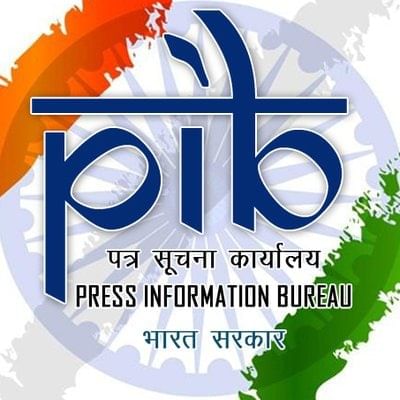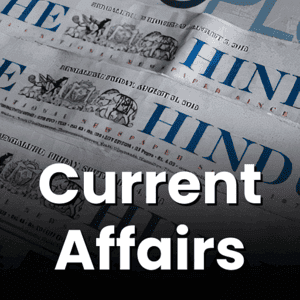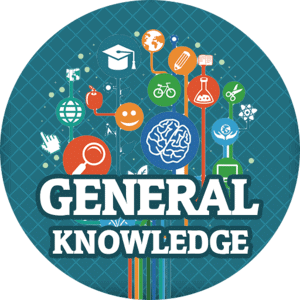Best Study Material for UPSC Exam
UPSC Exam > UPSC Notes > PIB (Press Information Bureau) Summary > PIB Summary- 10th March, 2022
PIB Summary- 10th March, 2022 | PIB (Press Information Bureau) Summary - UPSC PDF Download
WHO Global Centre for Traditional Medicine (WHO GCTM)
Why in News?
The Union Cabinet, chaired by Prime Minister has approved the establishment of the WHO Global Centre for Traditional Medicine (WHO GCTM) in Jamnagar, Gujarat by signing a Host Country agreement between the Government of India and the World Health Organization (WHO).
| 1 Crore+ students have signed up on EduRev. Have you? Download the App |
About WHO Global Centre for Traditional Medicine (WHO GCTM)
- The WHO GCTM will be established in Jamnagar under the Ministry of AYUSH.
- This would be the first and only global outposted Centre (office) for traditional medicine across the globe.
- The WHO GCTM would provide leadership on all global health matters related to traditional medicine as well as extend support to member countries in shaping various policies related to traditional medicine research, practices and public health.
Benefits:
- To position AYUSH systems across the globe
- To provide leadership on global health matters pertaining to traditional medicine.
- To ensure quality, safety and efficacy, accessibility and rational use of traditional medicine.
- To develop norms, standards, and guidelines in relevant technical areas, tools and methodologies, for collecting data undertaking analytics, and assess impact. Envisage WHO TM Informatics centre creating a collaborative of existing TM Data banks, virtual libraries, and academic and research institutes.
- To develop specific capacity building and training programmes in the areas of relevance to the objectives and conduct training programmes in campus, residential, or web-based, and through partnerships with the WHO Academy and other strategic partners.
About Traditional Medicine:
The traditional Indian system of medicine comprises of Ayurveda, Yoga and Naturopathy, Unani, Siddha, and Homeopathy (AYUSH), is a perennially neglected alternative medicine sector.
Ayurveda:
- The word Ayurveda means ‘Science of Life’ and employs treatment modalities, such as purification, palliation, prescription of various diets, exercises and the avoidance of disease causing factors and it evolved nearly 5000 years ago.
- The Ayurvedic medicine, though practiced for a wide range of health needs, is more commonly used for preventive and health and immunity boosting activities.
Yoga & Naturopathy:
- Practices of Yoga are reported to have originated in India and is now being adapted to correct lifestyle by cultivating a rational, positive and spiritual attitude towards all life situations.
- 21st June is designated as ‘International Yoga Day’.
- Naturopathy or the naturopathic medicine is a drugless’ non- invasive system of medicine imparting treatments with natural elements based on the theories of vitality, toxemia and the self-healing capacity of the body, as well as the principles of healthy living.
- The common naturopathy modalities include counselling, diet and fasting therapy, mud therapy, hydrotherapy, massage therapy, acupressure, acupuncture, magnet therapy and yoga therapy.
Unani Medicine:
- It was originated in the Arab world, though over a period of time it imbibed some concepts from other contemporary systems of medicines in Egypt, Syria, Iraq, Persia, India, China and other Middle East Countries.
- Unani medicine treats a patient with diet, pharmacotherapy, exercise, massages and surgery.
Siddha:
- Originated in India and is amongst the oldest systems of medicine in the country.
- It takes into account the patient, his/her surroundings, age, sex, race, habitat, diet, appetite, physical condition etc. to arrive at the diagnosis.
- Siddha System uses minerals, metals and alloys and drugs and inorganic compounds to treat the patients.
- Unlike most T&CM, this system is largely therapeutic in nature.
- Siddha literature is in Tamil and it is practiced largely in Tamil speaking part of India.
Homeopathy:
- The word ‘Homeopathy’ is derived from the Greek words, ‘Homois’ meaning ‘similar’ and ‘pathos’ means ‘suffering’.
- It originated in Germany and was introduced in India around 1810-1839.
- It uses highly individualized remedies selected to address specific symptoms or symptom profiles.
- It is practiced in many countries and in India, where it is the second most popular system of medicine.
Sowa-Rigpa:
- The word combination means the ‘science of healing’ and is considered one of the oldest living and well-documented medical traditions of the world.
- It originated from Tibet and is widely practiced in India, Nepal, Bhutan, Mongolia and Russia.
Safety of Women
Download as PDF Download as PDFWhy in News?
To enhance the safety and security of women in the country, Ministry of Home Affairs has taken several initiatives which are funded by the Nirbhaya Fund.
Details:
- Investigation Tracking System for Sexual Offences (ITSSO) is an online analytical tool launched to monitor and track timely completion of police investigations in sexual assault cases (currently two months as per Criminal Law (Amendment) Act 2018).
- National Database of Sexual Offenders (NDSO) has been launched to identify repeat offenders and receive alerts on sex offenders, as also in the investigation.
- Crime Multi Agency Center (Cri-MAC) has been introduced for police stations and higher offices in all States/UTs to share information on heinous crimes and other issues related to coordination in cases of inter-state crime.
- New citizen Services have been launched by National Crime Records Bureau for cases of Crimes against Women. These services include functionalities like ‘Missing Person Search’ that helps citizens find their missing kin from the national database of recovered unidentified found person/unidentified dead bodies.
- Projects funded by Nirbhaya Fund are also being fast-tracked by MHA to enhance the safety and security of women. ‘Emergency Response Support System (ERSS)’ is an example of such initiative.
- Delhi Police recruited Social Workers & Counsellors to encourage women to step up and report crimes without fear or shame
- Safe City Projects in 8 cities: Among the projects funded by the Nirbhaya Fund, Safe City Projects in 8 cities (Ahmedabad, Bengaluru, Chennai, Delhi, Hyderabad, Kolkata, Lucknow and Mumbai) are under implementation. The projects involve the use of technology to improve the safety of women in India. This includes the use of drones, installation of CCTV cameras to alert Police about criminals and criminal activity.
The document PIB Summary- 10th March, 2022 | PIB (Press Information Bureau) Summary - UPSC is a part of the UPSC Course PIB (Press Information Bureau) Summary.
All you need of UPSC at this link: UPSC
FAQs on PIB Summary- 10th March, 2022 - PIB (Press Information Bureau) Summary - UPSC
| 1. What is the WHO Global Centre for Traditional Medicine (WHO GCTM)? |  |
| 2. What is the focus of the WHO GCTM? |  |
Ans. The WHO GCTM focuses on the safety and efficacy of traditional medicine, especially in relation to women's health. It aims to promote evidence-based practices, develop guidelines and standards, and strengthen the capacity of healthcare providers to deliver quality traditional medicine services to women.
| 3. Why is the safety of women an important aspect of traditional medicine? |  |
Ans. The safety of women is an important aspect of traditional medicine because women often have specific healthcare needs and may be more vulnerable to certain health risks. Traditional medicine practices should be safe and effective for women, taking into account their unique physiological characteristics and health concerns.
| 4. What are the key objectives of the WHO GCTM in relation to women's health? |  |
Ans. The key objectives of the WHO GCTM in relation to women's health are:
- To promote and support the safe and effective use of traditional medicine for women's health.
- To ensure that traditional medicine practices are evidence-based and meet quality standards.
- To strengthen the capacity of healthcare providers to deliver traditional medicine services to women.
- To facilitate research and development in traditional medicine for women's health.
- To promote the integration of traditional medicine into national healthcare systems, ensuring equitable access for women.
| 5. How does the WHO GCTM contribute to global healthcare in the field of traditional medicine? |  |
Ans. The WHO GCTM contributes to global healthcare in the field of traditional medicine by providing technical assistance and guidance to countries, promoting research and development, and facilitating the integration of traditional medicine into healthcare systems. By focusing on the safety and efficacy of traditional medicine for women's health, the WHO GCTM helps to ensure that women have access to safe and effective healthcare options.

|
Explore Courses for UPSC exam
|

|
Signup for Free!
Signup to see your scores go up within 7 days! Learn & Practice with 1000+ FREE Notes, Videos & Tests.
Related Searches

























